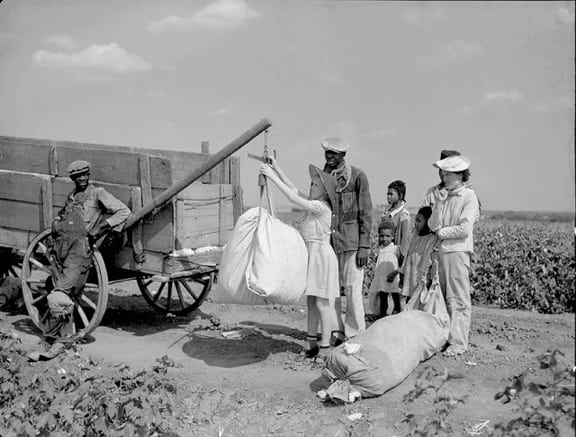
Plantation owner’s daughter checks weight of cotton. Kaufman County, Texas-1936 – photo Arthur Rothstein
Where is that Dansby’s Cotton-Patch Bitters from Terrell, Texas?
16 August 2013 (R•082714) (R•031715) (R•031416)
This is the only medicine on the market especially for our Southern diseases and we all know that diseases in a Southern climate are different from those in a Northern.
![]() Cotton played a big role in commerce in Texas so it is not surprising that there is a
Cotton played a big role in commerce in Texas so it is not surprising that there is a fabled bitters brand called the Dansby’s Cotton-Patch Bitters put out by the Cotton Patch Bitters Company in Terrell (Kaufman County), Texas. I just can not find the bottle.
The area consisted of scattered homes and reported a population of eleven in 2000.
There is even a tiny rural settlement called Cotton Patch that is located near the junction of Farm roads 2656 and 952 about twenty-one miles west of Cuero in western DeWitt County. Several families, including the Schmidts, Gruetzmachers, Dworaxzyks, and Meinens, farmed the area around the beginning of the twentieth century. Landowner Henry Buesing donated property for a one-room school that was built in 1914. The Buesing School was shown on county highway maps in 1936, and the facility operated until 1950. By the 1960s maps depicted the village of Cotton Patch at the location of the school. The area consisted of scattered homes and reported a population of eleven in 2000. [Texas State Historical Association]
Terrell, which is the subject locale in this post began as a “depot town” along the Texas and Pacific Railroad Company’s new transcontinental line from Longview (in East Texas) to California.
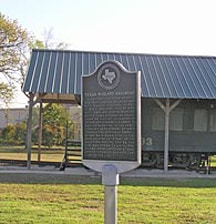 “depot town” along the Texas and Pacific Railroad Company’s new transcontinental line from Longview to California.
“depot town” along the Texas and Pacific Railroad Company’s new transcontinental line from Longview to California.
In 1873 a consortium of landowners led by Robert A. Terrell, an early pioneer and surveyor in the area, donated 100 acres to the railroad company in exchange for a depot on the rail line. The town was organized around this original town site and another 100 acres to the north owned by Terrell and his partners.
The railroad town grew rapidly, incorporating in 1874 with Col. J. W. Elder as the first mayor. When the town re-incorporated under new Texas law in 1875, it boasted more than 1,000 residents. Churches were organized almost immediately and public schools opened ten years later. A state facility for the care of the mentally ill was established here in 1883.
Railroads again became important shapers of local history in the 1890’s, when Terrell became the headquarters of one of the nation’s most prosperous short line railroads, the Texas Midland Railroad, with Col. E.H.R. “Ned” Green as president. Read about Ned Green
Green, son of the “witch of Wall Street” Hetty Green (at the time the richest woman in America), was a colorful character, as well-known for his personal exploits as for his business acumen.
Green, son of the “witch of Wall Street” Hetty Green (at the time the richest woman in America) (Read about Henrietta Green), was a colorful character, as well-known for his personal exploits as for his business acumen. Ned Green made the first automobile trip in Texas, a jaunt from Terrell to Dallas, at speeds of 20-25 mph. He also suffered the first auto accident in Texas. During the Dallas trip, Green and auto company representative George Dorris were crowded off the road by a farm wagon and ended up in a ditch!
Cotton reigned as the cash crop in rural areas surrounding the town.
By 1920, the Terrell State Hospital, with 2,300 patients, was the largest facility of its kind west of the Mississippi. Terrell was the commercial center of the county, and the downtown main street was crowded every Saturday as farm families came to town to trade and visit. Cotton reigned as the cash crop in rural areas surrounding the town. During this period more cotton was shipped from Terrell than from any other single place in the world.
During World War II a British Flight Training School (#1 BFTS) opened at the southern edge of the city. The airfield and its buildings provided sites for post-war industries, the beginning of the industrial diversification Terrell enjoys today. [Terrell Chamber of Commerce Convention and Visitors Bureau]
Moving to Terrell in 1879, he enlarged his business and is now among the most important drug men of the city.
I was able to find some material on a Dr. Robert Cosby Dansby who was a Pharamacist and a Freemason who established the R. C. Dansby Drugstore in 1878. It is here that he presumably sold his Cotton-Patch Bitters. Dr. Dansby died on Aug. 11, 1919. The article below is very important.
Leading Men of Terrell – R. C. Dansby
This gentleman is a native of Alabama, having first seen the light in Dayton, Maringo, in 1845. A son of a well-known physician of his county he had all the advantages that money and influence could procure. Before his majority he graduated at Tusealoosa, in the State University, with high honors. He selected pharmacy as his profession and has prosecuted his studies and kept constantly engaged in this business up to the present time. The war swept away a handsome patrimony, and he was thrown upon his own resources while yet a boy. In Mobile, Alabama he received his education in the drug business. In 1871 he left Alabama with his wife and child came to Texas and settled in Prairieville, where he met with almost unparalleled success. Moving to Terrell in 1879, he enlarged his business and is now among the most important drug men of the city. He is among the wide awake and most enterprising men of this day, and has an enviable future before him.
Appears in The Terrell Star, 24 December 1882, Terrell, Kaufman County, Texas

Dansby’s Cotton Patch Bitters Co. advertisement – The Standard, Vol. 8, No. 39, Ed. 1 Thursday, August 11, 1887. Clarksville, Texas. I sure would like to get my hands on that 40-column family paper on the product.
Read: Some nice Detective Work on R. C. Dansby
The Carlyn Ring and W. C. Ham listing for this bottle in Bitters Bottles:
D 18 DANSBY’S COTTON-PATCH BITTERS
DANSBY’S / COTTON-PATCH / BITTERS // sp // f // sp //
8 1/2 x 2 3/8 (6 1/4) 1/4
Square, Amber, Tooled lip, 3 sp, Extremely rare
Trade Mark September, 1886, Robert C. Dansby, Terrell, Texas. In business since 1879.
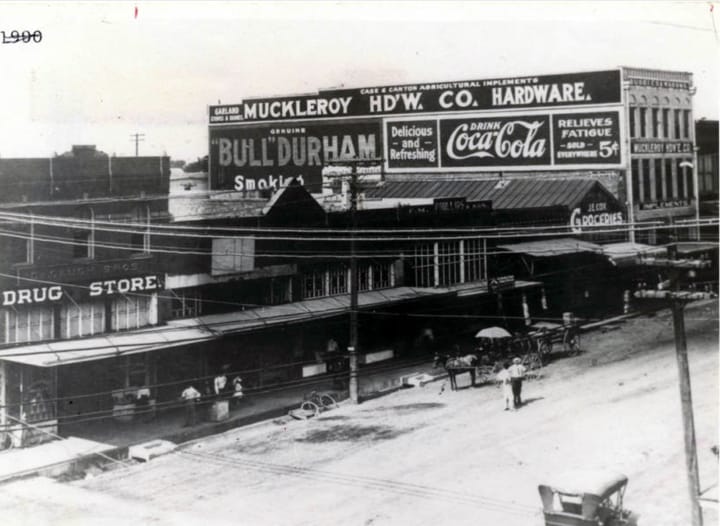
Drug Store in Terrell, Texas. One can only wonder if the Cotton Patch Bitters once graced the shelves of the store. This was the original Dansby Drug Store.
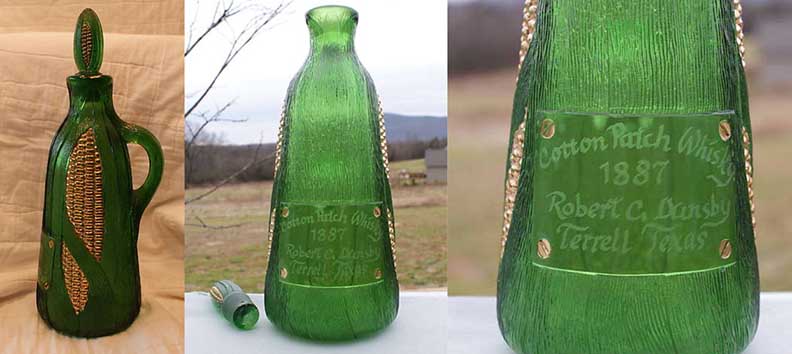
Photos of a “DANSBY’S COTTON PATCH WHISKEY”. I think I got them off of Ebay some years ago. Sorry it’s not the “Bitters”. Best Regards; Corey Stock Note: There is speculation that the copy was etched on this bottle at a later date.
The R. C. Dansby Drug Store
Walter Dickson Adams and the Adams Drugstore – A native of Kaufman County, Walter Dickson Adams (1872-1961) came to Forney in 1887. In 1893 he purchased the F. M. Adams Drugstore, a successor of the R. C. Dansby Drugstore established in 1878. He was the town’s most prominent druggist for the next sixty-eight years. Originally on S. Bois D’Arc Street, the store was relocated to Main Street in 1901. A respected community leader, Adams was elected mayor in 1912 and held offices in state and national professional organizations. Still a thriving local business, the Adams Drugstore was moved to this site in 1976. [source research Marianne Dow]
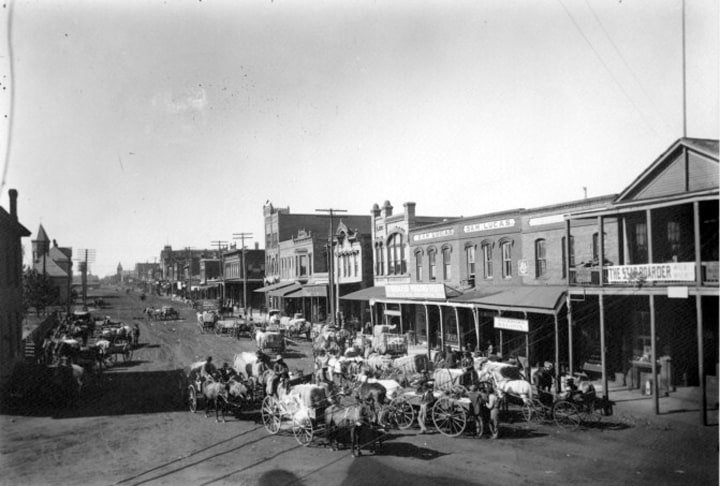
Cotton Wagons on Spring Street – Palestine, Texas. Photograph, ca. 1890; University of North Texas Libraries, The Portal to Texas History, crediting Anderson County Historical Commission, Palestine, Texas.

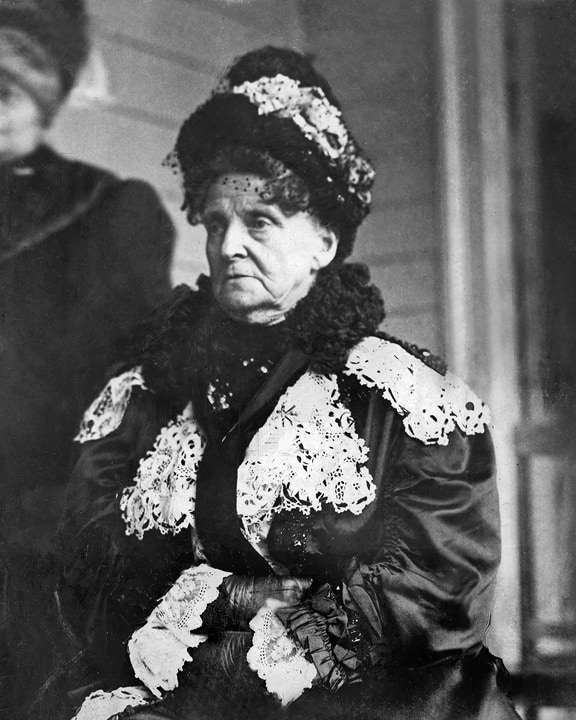
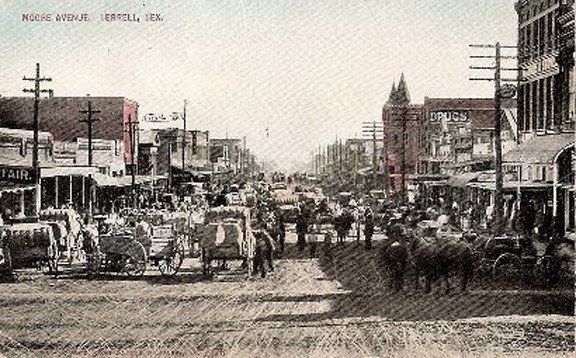
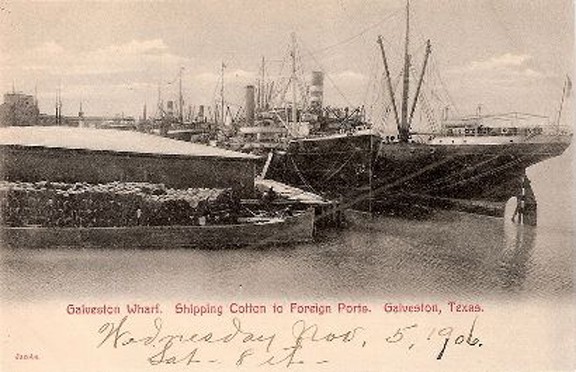

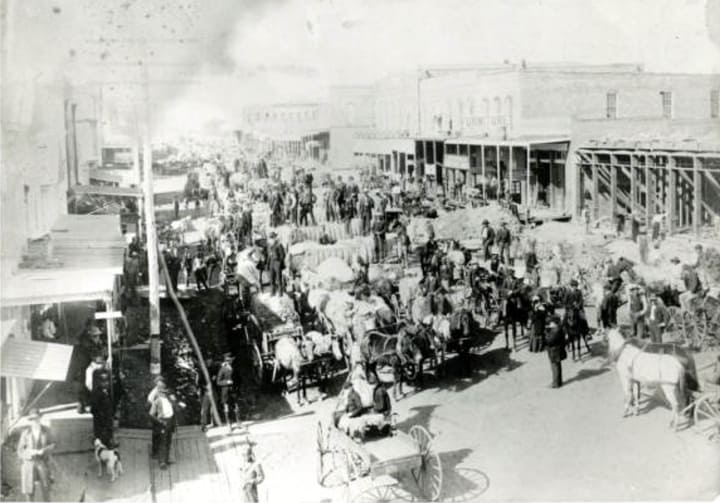
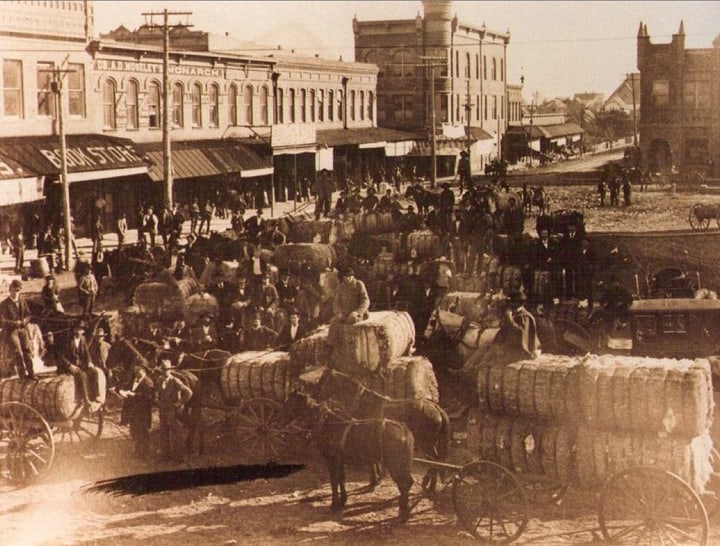
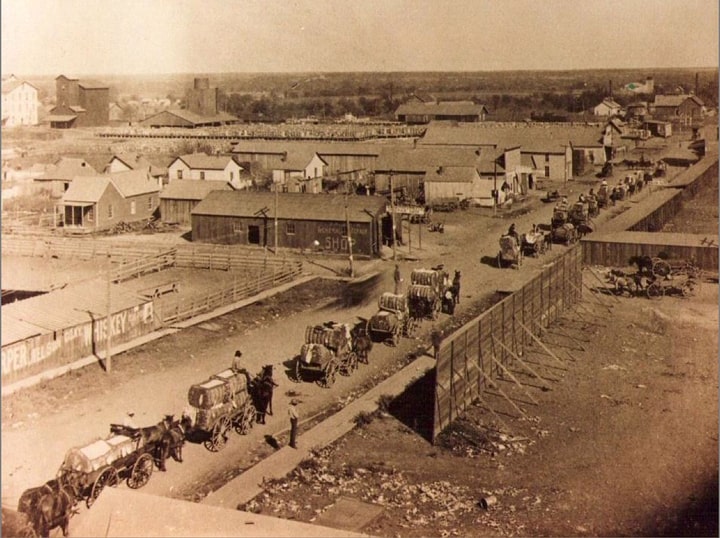
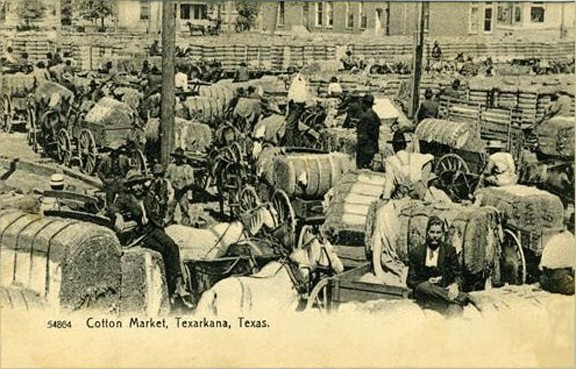
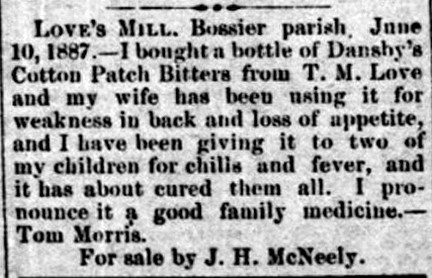
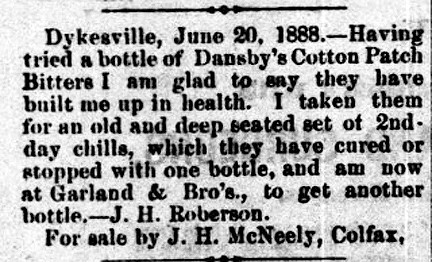
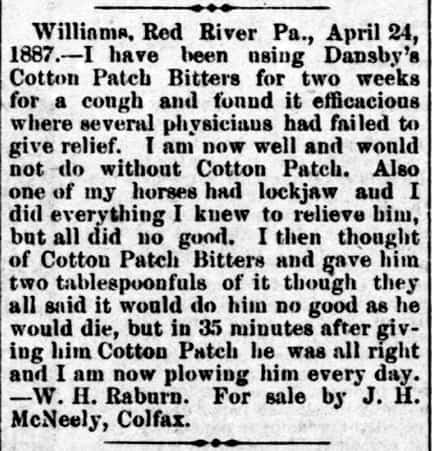
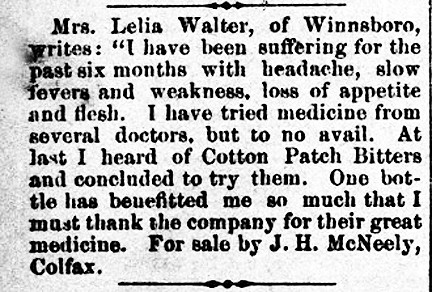
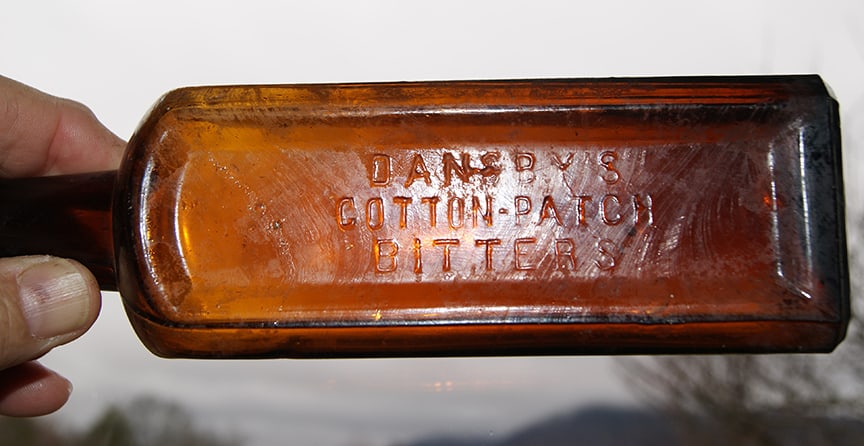






Cotton Patch Bitters post updated with six newspaper clippings from James Viguerie.